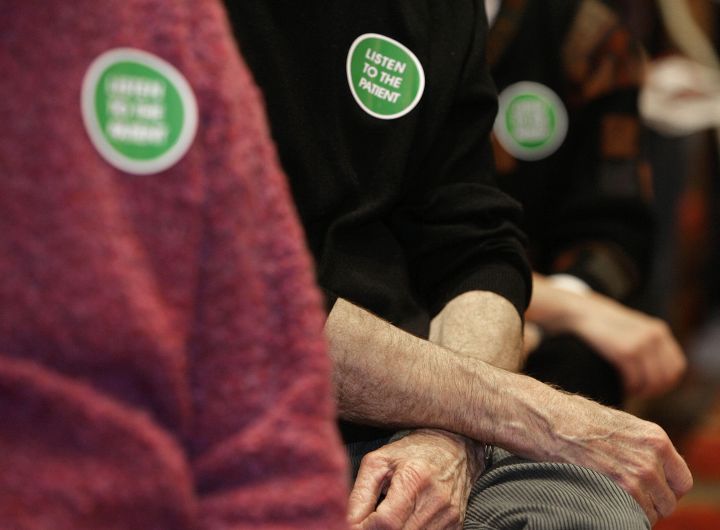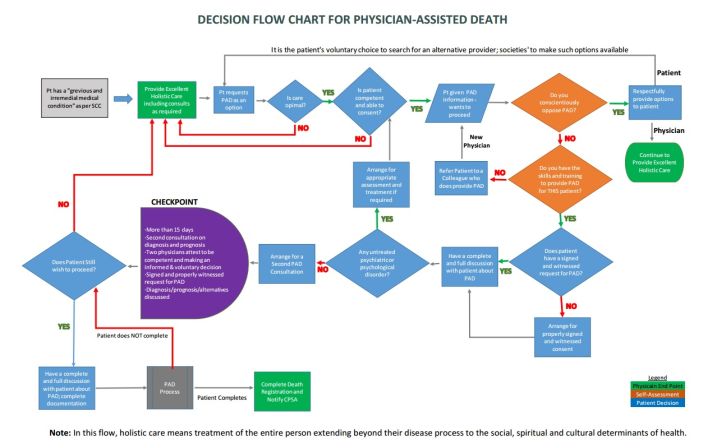CALGARY –When physician-assisted death becomes decriminalized in Canada in February, Alberta’s doctors want to be ready. The College of Physicians & Surgeons of Alberta has drafted advice for its members and is asking for feedback from both health professionals and the public on that advice.

READ MORE: Debate flies at CMA meeting over physician’s role in assisted dying
The college emphasizes that only “competent adult patients can consent to physician-assisted death,” which means it’s not available for minors or incompetent patients, even when an advance directive is in place.
In a unanimous ruling earlier this year, the Supreme Court of Canada declared Canada’s Criminal Code prohibitions on physician-assisted dying are unconstitutional and violate an individual’s right to life, liberty, and security of the person.
“The SCC decision establishes physician-assisted death (PAD) as a Charter right for ‘a competent adult person who (1) clearly consents to the termination of life; and (2) has a grievous and irremediable medical condition (including an illness, disease or disability) that causes suffering that is intolerable to the individual,’” the college writes.
The court gave Ottawa a year to put new laws in place. With February approaching, however, the status quo remains, leaving plenty of unanswered questions.
Namely: What constitutes a “grievous and irremediable medical condition”? What will reporting requirements and insurance protection be?
READ MORE: Woman’s death rekindles arguments surrounding doctor-assisted dying
The college also notes it isn’t clear how other medical professionals, such as a “pharmacist dispensing a lethal medication or a nurse participating as a member of the team,” will be affected by the decision.
The draft contains 17 pieces of advice, including:
- Doctors should provide access to holistic and palliative care;
- After a patient requests it, doctors should have a full discussion about PAD with the patient including other options, risks of taking the prescribed medication, life insurance implications and option to rescind the request to die at any time;
- Documentation from the patient that details the decision to proceed with PAD and that’s signed by a witness “who is not: a relative; entitled to any portion of the estate; an owner, operator, or employee of a health care facility where the patient is receiving treatment; or the attending physician.”
- Referral to a psychiatrist or psychologist if the doctor believes the patient’s judgment might be impaired;
- Second consultation and waiting period of at least 15 days are mandatory;
- Physicians may also decline to provide PAD “if doing so would violate their freedom of conscience” but must provide information so the patient can access all options for care.
“We looked at jurisdictions around the world where physician aid in dying is already legal, as well as Quebec in Canada, to see what they were doing,” Theman told Global News. “So we’ve incorporated a lot of the concepts from those jurisdictions.”
The college also made a flow chart to aid health care professionals in their decisions:
The full draft advice can be found at http://bit.ly/letstalkPAD, where you can also fill out a survey to comment on whether the advice hits the mark, if anything has been missed, and what else would be helpful.
The decision allows both assisted suicide and euthanasia. Assisted suicide means the patient is provided assistance in intentionally ending his or her own life (e.g., an ALS patient who is provided with a lethal dose of medication for self-administration). Euthanasia means a physician directly administers a lethal dose of medication after a formal request by the patient.
READ MORE: How doctor-assisted dying works in Oregon



Comments